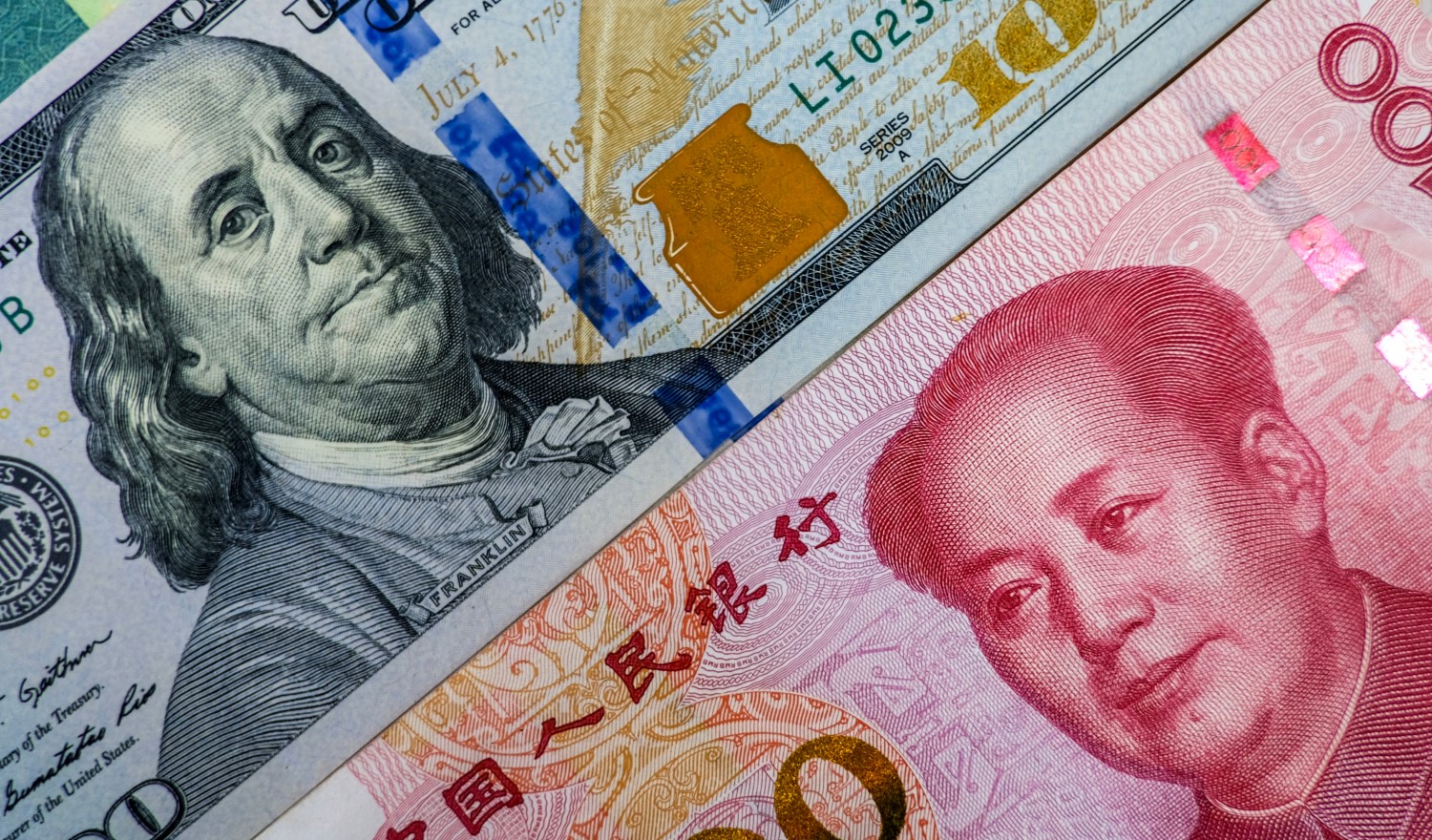
The United States dollar has served as the world's reserve currency since World War II, but it is now facing its biggest challenge yet, both domestically and abroad, from China’s renminbi, or yuan. Having control over the global reserve currency has given the USD significant influence in international trade and the world economy. Maneuvering the yuan as an alternative or replacement reserve currency has been a significant effort by the People’s Republic of China. The PRC has pursued this goal by conducting more international trade using the Chinese yuan, and negotiating deals to allow the purchase of Saudi Arabian oil in yuan. The PRC has also developed an alternative to the SWIFT transaction system that is primarily denominated in USD with the CIPS system. The PRC hopes that the challenges facing the USD will allow for the yuan to rise as a global reserve currency. However, it faces major roadblocks in adoption and confidence abroad.
Domestic Challenges to the Dollar
Rising inflation, interest rate hikes, and the debt ceiling not being raised have provided the USD with its largest domestic challenges since Nixon revoked the gold standard. During the pandemic, low-interest rates and stimulus packages helped avoid an economic crash, but led to global inflation and eventually domestic inflation in the United States.. Trying to rectify this, the Federal Reserve was tasked with its Dual-Mandate to combat inflation while retaining maximum employment. Since March 2022, the Federal Reserve has hiked rates ten times to 5.25%. In a recent testimony to the Financial Services Committee, Chair Jerome Powell expressed that more rate hikes are likely needed to occur before the end of the year to combat inflation. However, the Federal Reserve’s fiscal tightening has created a rough monetary environment for risky financial institutions. This has already led to several banks declaring bankruptcy or needing bailouts.
The USD’s most pressing issue, though, is the looming debt ceiling. The debt ceiling determines how much money the U.S. government can raise as debt through treasuries and bonds. The U.S. is rapidly approaching the current ceiling and has not passed a bill allowing for its raising as it has in the past. With the debt ceiling not being raised, a national budget for 2023 has yet to be passed as well. Partisan fighting has caused this delay and a compromise has yet to materialize. Without raising the debt ceiling or a revised budget, many government agencies are prevented from operating and achieving their long-term strategic goals, including the U.S. Department of Defense. The combination of all these factors has led to decreased confidence in the USD worldwide, and could be one of the largest challenges the USD has faced to maintain its long-standing status as the global reserve currency.
Use of the Chinese Yuan Abroad
Seeing this potential instability, the PRC has attempted to carry out transactions in yuan as much as possible.. For the first time in decades, China spent more in yuan for cross-border transactions than the USD. In March of 2023, it transacted a record $549.9 billion in yuan, making it 48.4% of all cross-border transactions. To achieve this, China has been negotiating with other countries to purchase necessary goods in yuan, such as oil and gas. Russia, one of China’s largest oil suppliers, has agreed to sell billions of cubic meters of oil from the Power of Siberia Pipeline in yuan. China has also long sought to purchase oil and gas from Saudi Arabia in yuan but has yet to negotiate a final deal.
Lack of Adoption of Chinese Systems by other Countries
The majority of transactions between banks and other financial institutions go through the SWIFT international transaction system, which is a Belgian institution. However the system primarily processes transactions in USD. SWIFT is also subject to Western sanctions, as evidenced by the removal of several Russian banks from the system. China has created an alternative to the SWIFT system with the Cross-Border Interbank Payment System (CIPS). But despite being heralded as a SWIFT alternative, CIPS still lacks mass adoption even within China’s borders and still uses SWIFT messaging in most of its transactions. The majority of cross-border bank transactions through CIPS are between Chinese banks as well.
The rise in yuan-denominated cross-border transactions can appear frightening to the USD, but China likely accounts for the majority of the rise by itself. This means that instead of more countries utilizing the yuan in cross-border transactions, China has increased its percentage of international transactions in the yuan. While this is still a blow to the USD as a global reserve currency, it is not enough to replace it yet. Like the CIPS system, China’s yuan is not yet widely adopted abroad. To become a real threat against the USD as a global reserve currency, we would need to see more cross-border transactions between other countries besides China. Currently, the yuan is moving towards a “China Plus” currency where countries with close ties, significant trade, or allies to China will conduct business with Beijing in yuan, such as “China Plus Russia”, or “China Plus Iran.”
Despite the increase of global transactions carried out using yuan, it has still yet to gain enough use to challenge U.S.-led financial institutions, or the USD as a global reserve currency. While the USD is weakened by inflation, high interest rates, and the looming debt ceiling, it is still the most used currency in cross-border transactions. The PRC will continue to push the yuan as an alternative to the USD as a global reserve currency. However, until it gains mass adoption in countries other than those antagonistic to the Western financial ecosystem, it will remain as a “China Plus” currency.